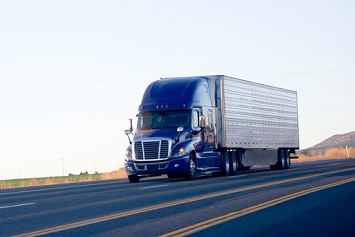Workers in transportation and material moving suffered more injuries in 2018 than any other occupation, the Department of Labor’s Bureau of Labor Statistics (BLS) reported. The BLS released data on the number, incidence rate, and median days away from work for nonfatal workplace injuries and illnesses in private industry—broken down by occupation.

The top 10 occupations with the highest number of injury or illness cases in 2018 were:
- Transportation and material moving—with 184,470 cases, an incidence rate of 193.7 per 10,000 full-time workers, and a median of 13 days away from work;
- Production—with 98,140 cases, an incidence rate of 106.5, and 7 days away from work;
- Installation, maintenance, and repair—with 79,380 cases, an incidence rate of 148.1, and 10 days away from work;
- Construction and extraction—with 73,630 cases, an incidence rate of 127.3, and 11 days away from work;
- Food preparation and serving-related—with 73,410 cases, an incidence rate of 75.2, and 6 days away from work;
- Office and administrative support—with 64,800 cases, an incidence rate of 38.4, and 10 days away from work;
- Sales and related—with 59,610 cases, an incidence rate of 46.6, and 8 days away from work;
- Building and grounds cleaning and maintenance—with 54,400 cases, an incidence rate of 166.0, and 7 days away from work;
- Healthcare practitioners and technical—with 50,810 cases, an incidence rate of 72.9, and 6 days away from work; and
- Healthcare support—with 47,960 cases, an incidence rate of 142.5, and 6 days away from work.
In all, 900,380 nonfatal workplace injuries and illnesses were reported in the private sector in 2018 in which an injured or ill worker took a least 1 day away from work to recuperate—essentially the same number as reported in 2017. The incidence rate remained unchanged in 2018 at 89.7 cases per 10,000 full-time workers. The median days away from work to recuperate was 8 days—the same as reported in 2017.
The 184,470 injuries and illnesses reported in transportation and material moving accounted for 20% of all cases that resulted in days away from work.
Transportation and material moving occupations include laborers, as well as drivers and other vehicle operators. They work in industries that include truck transportation, warehouses, courier and express delivery services, inland water transportation, charter bus service, and transit and ground passenger transportation.
The National Institute for Occupational Safety and Health (NIOSH) has a Transportation, Warehousing and Utilities (TWU) Program focused on
eliminating occupational injuries, illnesses, and fatalities among the nearly 7 million workers in the industries. Recent accomplishments of NIOSH’s TWU Program include:
- Musculoskeletal health research focused on couriers, messengers, and baggage handlers;
- Funding for state programs to investigate truck driver deaths and make recommendations to prevent similar fatalities, as well as disseminate fact sheets and toolbox talks aimed at prevention;
- Funding for a Trucking Injury Reduction Emphasis (TIRES) project to distribute technical reports and injury prevention materials; and
- Research into prevalence of obesity, lack of leisure-time physical activity, and short sleep duration in the occupational groups.
